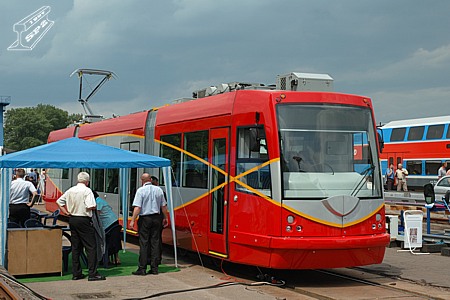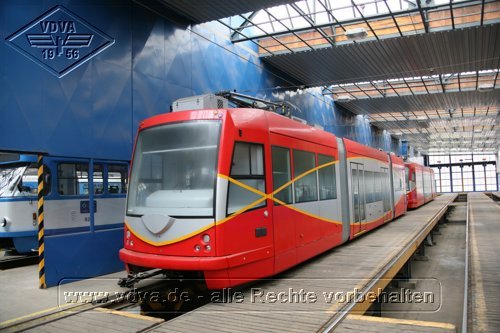|
Special Features





Image Libraries


|
|
Blog
This is listed in the Newsfeed, but for readers who don’t subscribe to that directly: Your Sprint, AT&T and T-Mobile cell phones will soon work in the Metro, in addition to Verizon.
Note to Verizon: You’ll have to stop dropping my calls now. I won’t put up with that once I have some choice.
Note to Metro riders: Please use text messages so everyone else doesn’t have to listen to your convo.
Average Rating: 4.4 out of 5 based on 176 user reviews.
February 27th, 2009 | Permalink
Tags: transportation

|

Developers are building fewer of these…
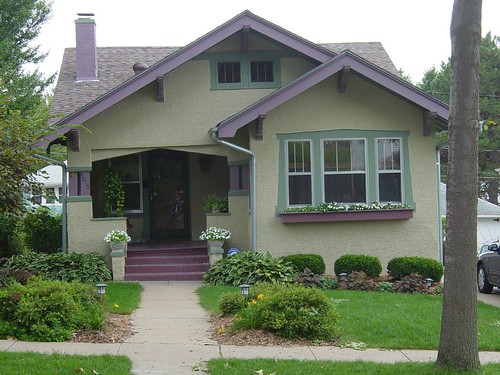
… and more of these |
From an article in today’s Gaithersburg Gazette:
According to a recent survey by the National Association of Home Builders, 89 percent of developers said they were building more lower-priced homes, and 88 percent said they were constructing smaller homes.
…
The average single-family home newly under construction in the fourth quarter of 2008 had a floor area of 2, 343 square feet, an 8 percent drop from the same period during the previous year, according to the U.S. Census Bureau.
…
“We have seen cycles like this before, ” Kettler said. “I think it’s accurate to say that when there’s tougher economic times, the houses get smaller.”
…
A larger proportion of first-time home-buyers in the market for a house is also driving the trend, according to the survey.
Skyrocketing fuel costs also may be making homeowners rethink investing in so-called McMansions, huge houses with high ceilings that can be expensive to heat and cool.
“People just see that as excessive, and as times have gotten tougher, I think people are going back and saying, ‘Hey, do I really need that big a house?'” Kettler said.
…
“We are cognizant of a trend to smaller footprints and traditional neighborhood designs, ” (says developer Steve Nardella).
Maybe it’s wishful thinking, but maybe when America emerges from this recession we’ll have learned a thing or two about community building.
Average Rating: 4.9 out of 5 based on 194 user reviews.
February 25th, 2009 | Permalink
Tags: architecture, development, economy

|
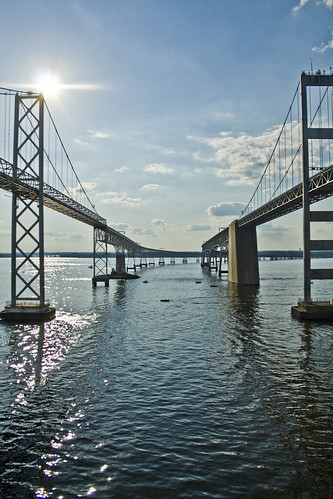
The two spans of the Chesapeake Bay Bridge |
In the summer months, Ocean City, Maryland swells from a sleepy town with a four-digit population to the state’s second largest city. At least 200, 000 visitors descend on it each summer weekend. The city spans well over 100 blocks north-to-south and boasts some of Maryland’s tallest buildings outside Baltimore. And Ocean City is just the largest of the Maryland-Delaware resorts.
And for the most part, everyone who goes to any of them drives, every time they go. So many people hit the road for OC each summer weekend that Maryland is considering adding a third span to the Chesapeake Bay Bridge.
Maybe that’s not the answer. If it were possible to get to Ocean City on transit, how many of those visitors would really need a car once there? Between the boardwalk tram and the Coastal Highway buses, it’s pretty easy to get around car-free. So given that DC-to-beach congestion is getting so bad, and given that Maryand is taking up the topic for study anyway, maybe it’s time to start thinking seriously about a Transitway To The Sea.
Such things are possible. New Jersey transit trains roll to the Jersey shore from both New York and Philadelphia, LIRR trains run to the Hamptons, Los Angeles is going to build a subway straight to Santa Monica, and just a few days ago I rode the N-Judah Muni Metro light rail line to one of San Francisco’s Pacific beaches. People use city-to-beach transit.
Unfortunately, the lack of existing rail tracks between DC and Annapolis or leading directly to Ocean City is a problem. Building a train from DC to the Atlantic would involve far more than just a new span across the Chesapeake. The money it would cost to lay new tracks would most likely be better spent on more urban projects that would serve riders year-round. But if a train is off the table, what about buses? In the BeyondDC Transit Vision the DC-Annapolis corridor was identified as ideal for BRT service. With the right bridge layout and the right investments to Route 50, Maryland might solve its holiday congestion problem (or at least give thousands the opportunity to bypass it).
Of course not everyone who crosses the Bay Bridge is going to Ocean City, nor even to Rehoboth or Bethany, but thousands and thousands of people are. Many of them are happy to ride intercity buses headed to New York, so why shouldn’t people ride a bus line to Ocean City?
Maryland should expand its study of a new span for the Bay Bridge to encompass summer holiday travel in a more general sense. If 200, 000 people are making essentially the exact same trip from the DC/Baltimore area to Ocean City every weekend in the summer, it would be far more economical, environmental and convenient to supply them with a quality transitway than expect every one of them to drive. Given that a new bridge would most likely be a billion dollar project, Maryland has a responsibility to at least consider other options.
Average Rating: 4.9 out of 5 based on 252 user reviews.
February 25th, 2009 | Permalink
Tags: featured post, transportation

Here is the full stimulus bill text. The best explanation of the transportation-related funding I’ve seen thus far comes from last Wednesday’s meeting of the Transportation Planning Board – the same body that threw a wrench into VDOT’s plans to widen I-66 in Arlington. The TPB publicized a three-page summary of funding that could be available for transportation. It is far more in-depth and accurate than the AP report I cited back on the 12th.
To summarize the summary:
- $27.5 billion is allocated to the Federal Highway Administration, most of which will be distrubed according to formula to the state DOTs. Of that $27.5b, it is estimated that $1.25 billion will flow to DC, MD and VA (in total, not each). Of that money, at least $460.5 million must be spent in the greater Washington urbanized area.
- The Federal Transit Administration gets $8.4 billion. From that pot, $7.6b will be distributed via various formulas, such that the DC metroplitan area will receive $230 million. All $230 million of that money will go to WMATA. Most of the remaining FTA allocation will go to the New Starts capital investment grant program, and will be discretionary. It is likely this money will go to projects already in the FTA New Starts pipeline, such as Tysons Corner Metro.
- $8 billion will go the Federal Railroad Administration to be used for intercity high speed rail. Rumor has it this money will go to a maglev demostration project, but that is just rumor. If true, such a project would probably not be the DC-Baltimore proposal, which is currently out of favor in Maryland.
- $1.3 billion will go directly to Amtrak. Of that, $850 million is for capital upgrades and $450 million for security. No more than $510 million of the $850m in capital can be used in the Northeast Corridor.
- $1.5 billion is available via a new discretionary grant program. The reports last week claiming there would be no discretionary money were wrong. Discretionary grants must range from at least $20 million up to a max of $300 million, and can be used for any type of transportation improvement. This program is expected to be extremely competitive nation-wide, and at best will likely only result in one or two projects in the DC region (if at all).
- Additionally, though not listed in the TPB summary, the Energy section of the stimulus bill includes a number of transportation-related grants. Among them, $100 million in discretionary grants to transit agencies for energy reduction programs and $700 million for various electric transportation programs (including purchases of hybrid buses).
Average Rating: 4.5 out of 5 based on 158 user reviews.
February 23rd, 2009 | Permalink
Tags: economy, government, transportation

Overheard in the elevator this morning:
“I had to take the bus this morning. They unloaded our train at East Falls Church. I haven’t done that since college.”
The middle-aged woman responsible for the quote was speaking in reference to Metro’s problems on the Orange line this morning. Apparently, she had to get off her train part way through her commute and find alternate transportation the rest of the way. This woman, probably a choice rider of rail transit for many years, had until today’s emergency situation never ridden a bus in her entire adult life.
Why ride the train every day but never even consider a bus? Maybe because all other things being equal, buses are less comfortable to ride than trains. They’re dirtier and bumpier. The simple fact is, there is a noticeable difference between gliding smoothly along a steel rail and rumbling over rough pavement. BRT, great as it is on its own terms as an improvement to surface buses (and it is great on those terms), cannot solve that basic problem, and therefore cannot ever fully replicate rail service.
Average Rating: 4.6 out of 5 based on 209 user reviews.
February 19th, 2009 | Permalink
Tags: transportation

|

I-66 in Fairfax County. Twice as wide yet more congested than I-66 in Arlington. Maybe congestion isn’t caused by lack of lanes. |
I’ve returned from San Francisco. Obviously. Those of you who follow the BeyondDC Twitter feed know about how things went. I had a lot of fun, saw a lot of interesting things, and took a crazy number of pictures. I’ll post about the trip, and about the federal stimulus (there *is* actually discretionary money), when I have time to catch my breath. Regular updates to the Newsfeed will start up again on Thursday.
In the mean time, topical news: The long fight over VDOT’s I-66 Spot Improvements project took an interesting and unexpected turn at today’s meeting of the Transportation Planning Board (TPB). The board was scheduled to take a routine vote to approve the Air Quality Conformity Assessment (AQCA), a technical step necessary to list projects in the regional Transportation Improvement Program (TIP). By Federal requirement, projects have to be in the TIP in order to be built. Since the I-66 project would affect air pollution in the region, it is part of the of AQCA.
Today’s twist came when TPB member (and transit champion) Chris Zimmerman asked VDOT representative Jo Anne Sorenson to update the board on the status of the I-66 corridor transit/TDM plan that VDOT agreed to pursue in coordination with the highway widening. Turns out the transit/TDM plan is still in its very early stages, and has no money attached to it for implementation (compared to the well-funded, shovel-ready highway widening). VDOT, it seems, wants to complete the highway widening as quickly as possible and isn’t really interested in making transit or TDM a priority in the corridor.
Zimmerman, who knows a thing or two about the necessity for more transit and whose constituency is overwhelmingly against the highway widening, then moved to amend the approval for the AQCA to remove the I-66 project until the full findings of the transit/TDM plan are available. Zimmerman argued that the board should know all the mobility options in the corridor before it approves anything, and that VDOT needs to take the transit study seriously.
A bunch of voice votes, two roll call votes, a jurisdictional weighted-by-population vote, and a failed compromise amendment later, the TPB approved Zimmerman’s amendment and struck the I-66 widening from the list of approved projects.
The widenings could still happen; they aren’t blocked for good. But using stimulus money on them is now probably out of the question, and if VDOT wants to carry them forward they’ll have to actually do the legwork promised and make something of this transit study.
This story will probably hit the mainstream news Thursday (yup: Biz Journal, WTOP). In the mean time, the Post’s Dr. Gridlock Get There blog has more.
Average Rating: 5 out of 5 based on 237 user reviews.
February 18th, 2009 | Permalink
Tags: environment, transportation

|

O hai, California |
BeyondDC (and the BDC Newsfeed) will be on hiatus for a few days while I visit San Francisco. Regular updates will resume sometime middle of next week. I will, however, be making plenty of Tweets while away, commenting on my impressions of the city.
No jokes about getting stuck at Alcatraz, please.
Average Rating: 4.4 out of 5 based on 283 user reviews.
February 12th, 2009 | Permalink
Tags: site

About a year ago BeyondDC posted a couple of pictures of one of the streetcar vehicles that DC has already bought and paid for. The LRVs were produced by Czech manufacturer Inekon in 2007 and have been making occasional runs on the streets of Czech city Ostrava ever since, waiting for the District to build some tracks.
I got curious and searched the internet for photos of our trains. These two are old news, having been featured in a DDOT report and WTOP article. Everyone has already seen them. But are there more?
I was able to find four pictures. They must all be newer than the original two, because unlike earlier versions, these photos all show streetcars with a yellow stripe separating the red and grey. Looks a lot better with the yellow, in my opinion.
Click each photo for its source.
I also pestered DDOT asking for an update. They can’t supply me with a timeline, but say they are “moving towards construction” and have selected a contractor (Fort Myer Construction Corporation). Good, if vague, news.
Average Rating: 4.8 out of 5 based on 151 user reviews.
February 12th, 2009 | Permalink
Tags: transportation

Using T4America’s handy Senate/House comparison table and AP’s compromise highlights list, I put together this quick comparison of three versions of the stimulus.
|
|
House
|
Senate
|
Compromise
|
|
Highway
& bridges
|
$30b
|
$27b
|
$27b
|
|
Transit
|
$12b
|
$8.4
|
$8.4b
|
|
High-speed
rail & Amtrak
|
$1.1b
|
$3.1b
|
$9.3b
|
|
Discretionary
|
n/a
|
$5.5b
|
?
|
According to the Post, Congress will vote on (and presumably pass) the bill in the next day or two, for Obama to sign by Monday.
The AP list doesn’t mention the Senate’s $5.5 billion transportation discretionary fund. Presumably that means it got the axe (Nope). That’s sure to upset some local governments hoping for earmarks, as well as folks hoping to see stimulus dollars applied
to New Starts projects. Indeed, that is unfortunate. On the other hand, if losing the discretionary fund is what it took to pay for
the drastically higher spending on high-speed and intercity rail, then that’s probably a good trade for the country in the long run.
The relatively smaller transit number does hurt, and should be mentioned. The big question on my mind now, though, is what sort of national rail system that kind of money can pay for. It’s not enough to build all this, but it’s a good chunk. Enough for something tangible.
Average Rating: 4.9 out of 5 based on 203 user reviews.
February 12th, 2009 | Permalink
Tags: economy, government, transportation

|
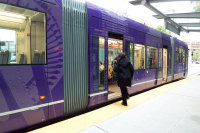
Seattle’s purple streetcar. |
Last month, Montgomery County endorsed light rail for the Purple line. It was a big win for responsible urbanism, but it wasn’t the end of the story. Two big hurdles remain:
- Maryland Governor Martin O’Malley, who will ultimately decide which option to pursue.
- The FTA, which (unless really drastic things happen at TEA time) will ultimately approve or deny Maryland’s application, and either provide or not provide a construction grant.
Given that the Purple line scores so well on FTA’s efficiency guidelines, the feds shouldn’t be a big problem. That leaves the governor’s office as the major question mark. O’Malley likes transit, but I’ve never heard him take a position on the BRT/LRT issue.
Until now. While reading a two-week-old WTOP article about the Montgomery County Council, I noticed this tidbit about the governor:
On WTOP’s Ask the Governor Program last week, Governor Martin O’Malley all but confirmed light rail will be the choice of the state, saying that option gives the most bang for the buck.
If true, the implication is that the Purple line is on track in a way it’s never been before – that at the moment, everything looks thumbs up.
Of course, it’s possible the recession will kill all capital expansion projects, and it’s possible the TEA update will redefine the Federal application process. Who knows. But as of right now, given the information we have, things look good.
Average Rating: 4.5 out of 5 based on 251 user reviews.
February 11th, 2009 | Permalink
Tags: government, transportation

|
Media





Site
About BeyondDC
Archive 2003-06
Contact
Category Tags:
Partners
|















